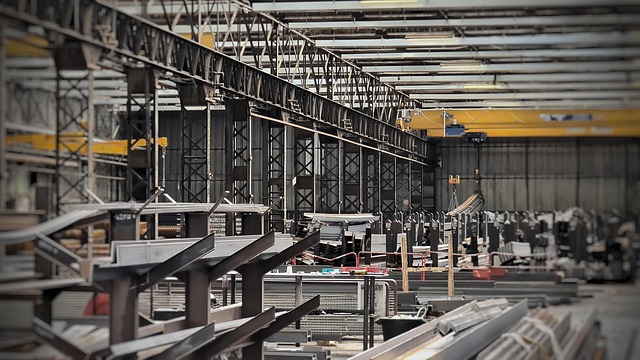Glue Laminated Beam Cost: Factors and Types Explained

Glue laminated beams (GLBs), engineered from multiple layers of lumber, offer exceptional strength and versatility for construction. Their durability,…….
Welcome to an in-depth exploration of a critical aspect of modern construction and engineering: Glue Laminated Beam Cost (GLBC). This innovative technology has revolutionized the way we build, offering enhanced structural integrity, efficiency, and design flexibility. In this article, we will navigate the various facets of GLBC, from its foundational components to its global impact and future prospects. By the end, readers should have a comprehensive understanding of this game-changing concept and its economic, technological, and regulatory implications.
Glue Laminated Beam (GLB) is a high-performance structural element crafted by laminating multiple layers of wood or wood-based materials with adhesive. This process creates a beam with exceptional strength, stiffness, and dimensional stability, surpassing traditional solid lumber or engineered wood products. GLBC refers to the cost associated with designing, manufacturing, and installing these advanced beams, which is influenced by various factors such as material selection, lamination techniques, and market dynamics.
The concept of laminating materials for structural applications dates back to ancient times, where early civilizations used layered wood or stone for construction. However, the modern GLB system emerged in the mid-20th century with advancements in adhesive technology and a growing demand for lightweight, strong building components. This innovation has been instrumental in:
Glue Laminated Beam Cost has left its mark globally, with varying adoption rates across different regions:
| Region | Adoption Rate | Key Drivers | Challenges |
|---|---|---|---|
| North America | High | Strong construction industry, favorable regulatory environment | High material costs, supply chain disruptions |
| Europe | Moderate to High | Increasing focus on sustainable building, advanced manufacturing capabilities | Fluctuating wood prices, regional variations in regulations |
| Asia Pacific | Growing | Rapid urbanization, increasing demand for modern architecture, government incentives | Infrastructure development challenges, quality control issues |
| Middle East & Africa | Low to Moderate | Growing construction sector, preference for traditional materials | Limited access to technology, regulatory barriers |
Several trends are influencing the GLBC landscape globally:
The global GLBC market is characterized by:
GLBC attracts investments from:
The economic implications of GLBC are far-reaching:
The GLBC space has witnessed several technological breakthroughs:
Technological advancements have led to:
The future holds immense potential for GLBC technology:
The development and deployment of GLBC are influenced by various regulatory bodies:
Policymakers’ decisions can significantly affect:
Despite its numerous advantages, GLBC faces several challenges:
Addressing these challenges requires collaborative efforts from various stakeholders:
In Stockholm, Sweden, a groundbreaking residential tower featuring extensively GLBs was constructed. The project embraced sustainable practices, utilizing locally sourced CLT for the building’s core. This case highlights the successful integration of GLBC into high-rise construction, demonstrating its ability to support tall structures while minimizing environmental impact.
Key Takeaways:
A state-of-the-art bridge project in Washington State utilized GLBs as part of its modular construction system. The project involved prefabricating sections offsite, including GLB components, and assembling them on-site for a faster and more cost-effective result.
Lessons Learned:
The future of GLBC looks promising with several growth areas and emerging trends:
To capitalize on these trends, stakeholders should:
Glue Laminated Beam Cost is not just a financial metric; it represents the evolving landscape of construction technology, offering a sustainable, efficient, and versatile solution to modern building challenges. This article has provided a comprehensive overview of GLBC, from its historical roots to its global impact, economic implications, technological advancements, and regulatory frameworks. By addressing challenges and harnessing emerging trends, the GLBC industry is poised for significant growth, contributing to more sustainable and resilient structures worldwide.
Q: Are glue laminated beams stronger than traditional lumber?
A: Yes, GLBs are generally significantly stronger and stiffer than traditional solid lumber due to their multi-layer construction and advanced lamination techniques.
Q: How do GLBs contribute to sustainable building practices?
A: GLBs offer several sustainability advantages, including being made from renewable wood resources, reducing material waste compared to traditional methods, and enabling more efficient building designs.
Q: Can GLBs be used in residential construction?
A: Absolutely! GLBs are increasingly used in residential projects, from single-family homes to high-rise apartments. They provide structural integrity while allowing for open floor plans and creative design.
Q: Are there any specific regulations governing GLB usage?
A: Yes, building codes and regulations vary by region but generally have specific requirements for GLB installation, load-bearing capacity, fire resistance, and environmental impact.
Q: How do technological advancements impact the cost of GLBs?
A: Advancements often lead to more efficient manufacturing processes, improved material quality, and enhanced design capabilities, which can lower costs over time while increasing performance.

Glue laminated beams (GLBs), engineered from multiple layers of lumber, offer exceptional strength and versatility for construction. Their durability,…….

Discounted glue laminated timber beams offer a robust, cost-effective solution for construction, appealing to professionals and DIY enthusiasts. With…….

DIY enthusiasts and contractors can reduce glue laminated beam (GLB) costs by exploring alternative materials like I-joists or open-web trusses. Advan…….

Glue laminated beams offer enhanced structural integrity and cost savings for construction projects, with initial expenses influenced by production sc…….

Glue laminated beams (GLBs) offer enhanced structural capabilities due to multi-layered construction. Cost is influenced by wood type, lamination proc…….

When seeking bulk laminated beam suppliers, prioritize reputable sources for product quality and cost savings. Focus on companies specializing in stru…….

Glue Laminated Beam (GLB) pricing varies based on glue quality, beam size, quantity, and customization. High-performance glues and larger beams cost m…….

Glue Laminated Beams (GLBs) offer cost savings in construction due to their strength, durability, and eco-friendly production from sustainable forestr…….

Understanding Glue Laminated Beam Cost factors like adhesive quality, production methods, and material sourcing is key to maximizing budget. Online sh…….

Glue laminated beams (glulam) cost varies by wood type, beam size, complexity, and local processing fees. Online pricing guides like unalam.com help d…….